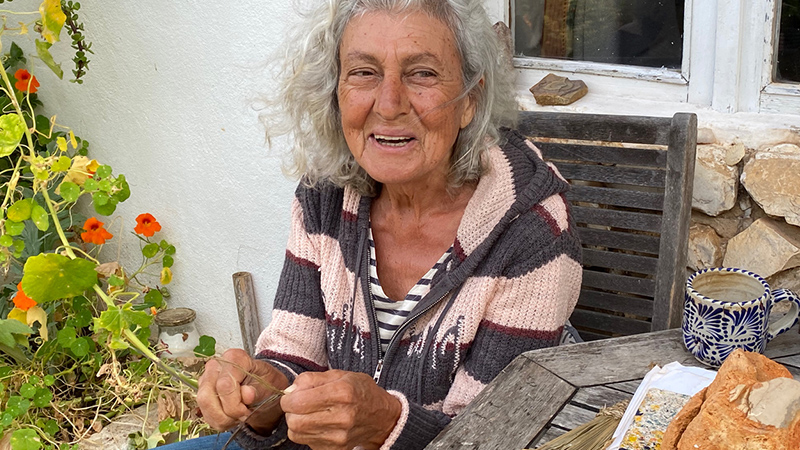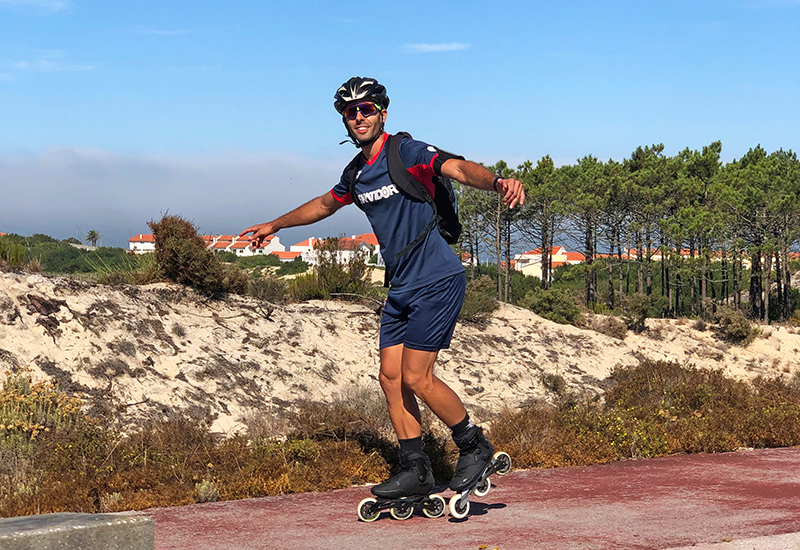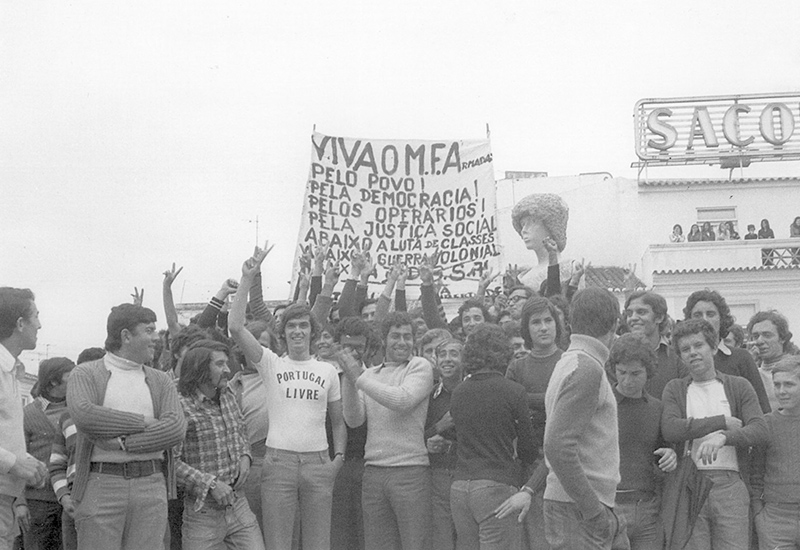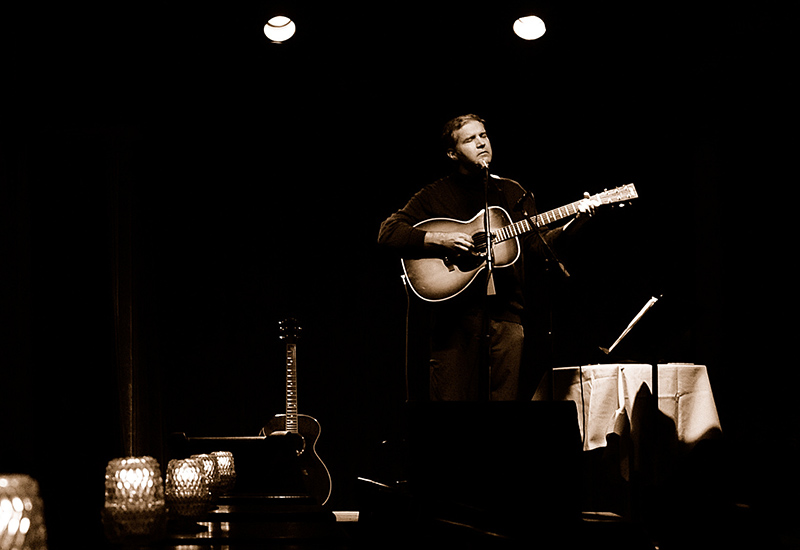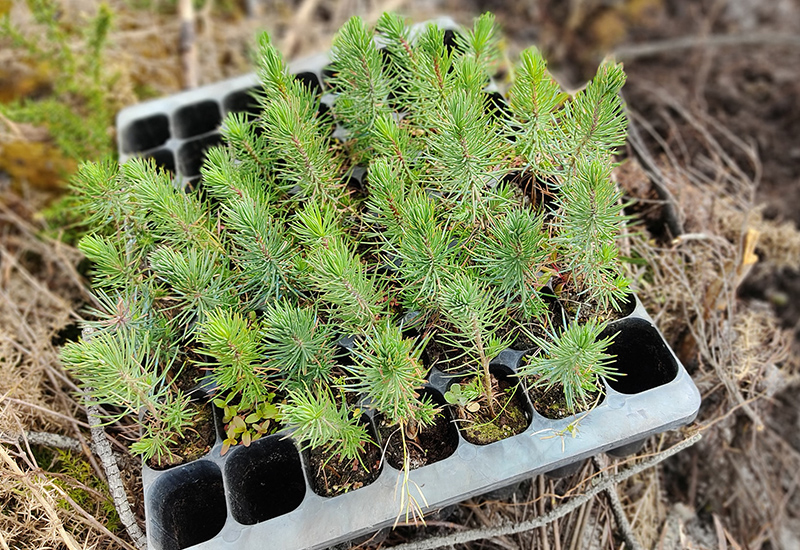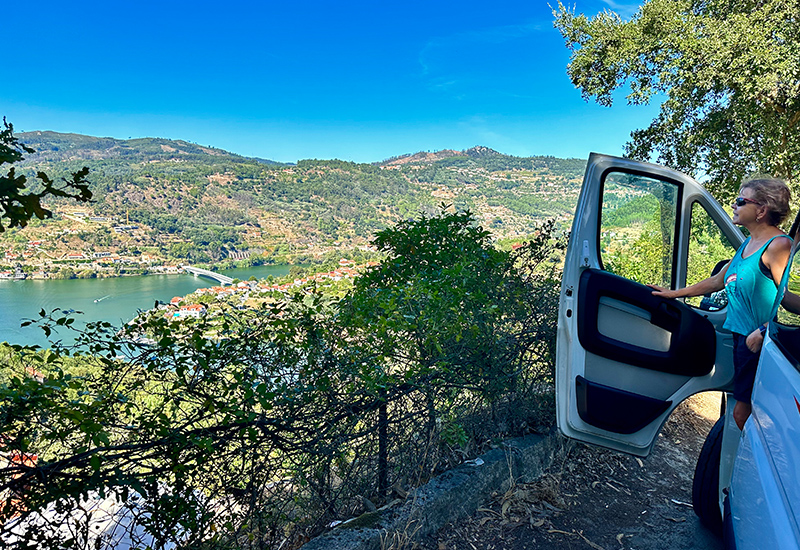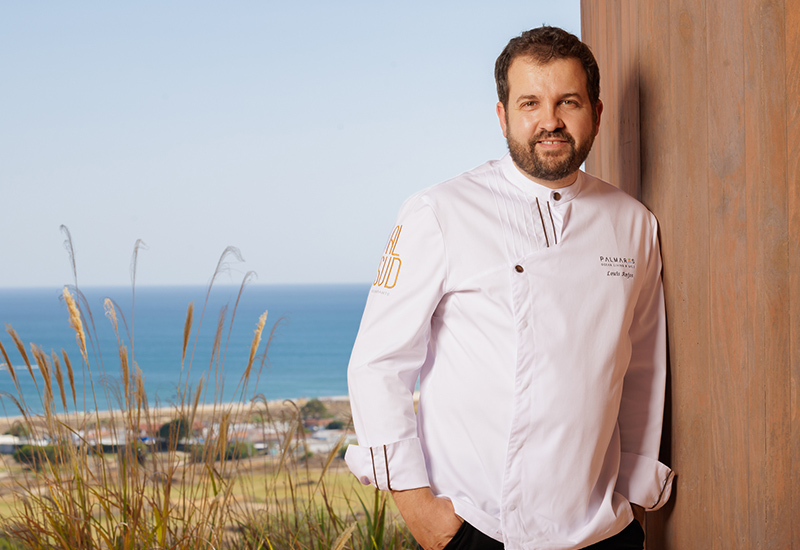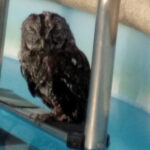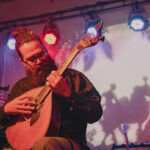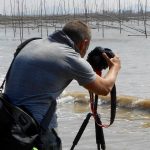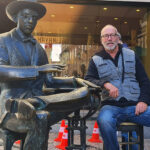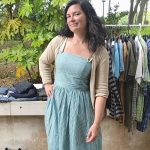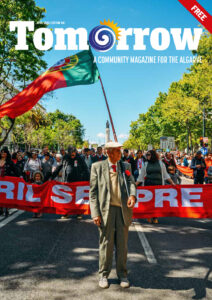Observant, intuitive, and in tune with nature, Manuela Caneco, is one of a kind. As a child growing up in Barão de São Miguel, a small village in the western Algarve, she relished roaming on the clifftops and exploring the bounty of the countryside. With her aunt, she learnt how to use the leaves from the palms that grew all around to produce everyday household items. Later she used the knowledge she gained to develop her art, inspired by nature. This close connection has always defined her life.
Now at 69, she lives happily in her childhood home that she has renovated and is content to share her experiences. The house looks unassuming from the road but once you step through the gate you enter a whole new world. Manuela welcomes me in the pleasant, albeit slightly disarrayed garden, with its profusion of plants. With her shock of curly white hair and smiling eyes, she proves to be a vivacious, engaging person.
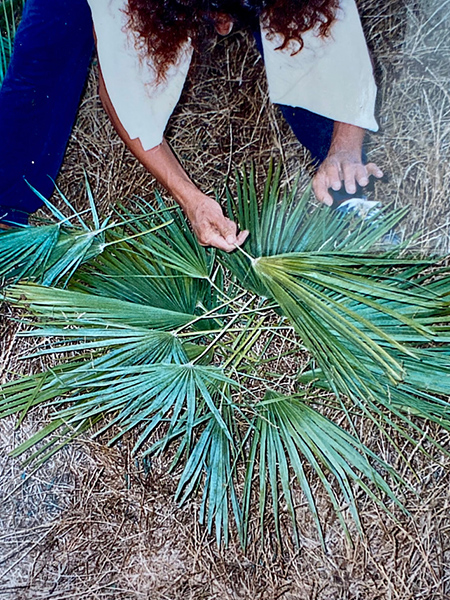
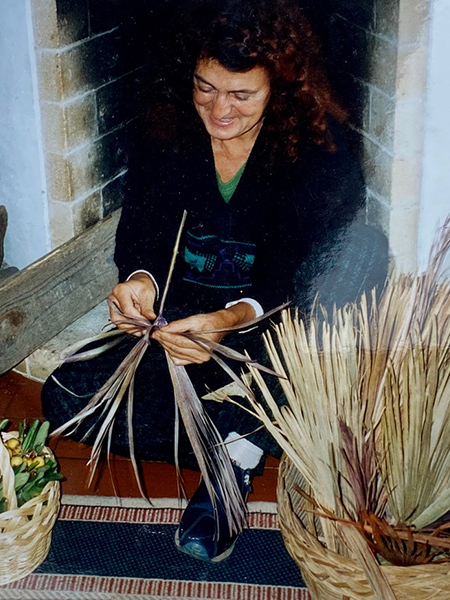
“I love using natural materials both for my own art and to teach others,” she says. She has taught arts in schools around the region all her life and has run countless workshops for adults, including several at Vale da Lama, Odiáxere for foreign residents. Apart from her native Portuguese, she is fluent in both English and French.
She likes teaching groups of children in her home. “They are local kids open to learning the old crafts. It’s so rewarding when they can take the items home for their families to see,” she enthuses.
So, what are the old crafts she is keen to preserve? In the past, items used in the house and outside were made by hand, anything from baskets, mats, baby cots and brooms to nosebags for the animals. “You couldn’t pop into the supermarket at that time,” she laughs.
The leaves used were picked from palms that grew wild in the region. In June, during the new moon, they were laid out for a month on the ground with stones on top to secure them. Some, like her aunt, used sulphur to whiten and preserve the leaves. The dried palm leaves were moistened and then worked into long strips of empreita, subsequently utilised for making objects.
“This is what I really like,” Manuela says,” It’s very therapeutic to sit there using both hands at the same time. It’s almost like meditation.”
Women worked mostly with palm leaves while men used esparto grass. It’s a tough, coarse spikey grass used for basketry, ropes, and mats since ancient times in Portugal, Spain and northern Africa. Manuela shows me a tightly woven basket made from this material. It’s a shepherd’s lunch box, complete with a flap to prevent anyone from stealing the contents! “In the 1980s, there were still people in the village that picked the plants and treated them, but this all but gone.” Manuela laments.
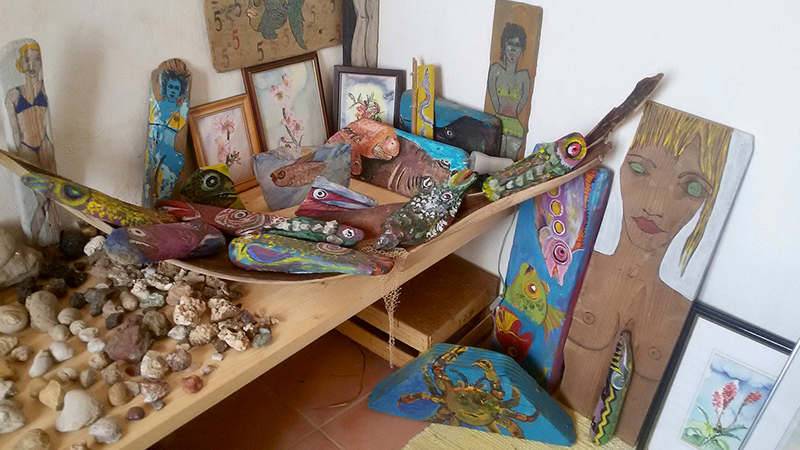
She acknowledges that it isn’t possible to restore the past as it was but thinks it’s important not to lose sight of one’s roots and identity: “We need to modernise and adapt what there was and give it a new reality, devoid of any nostalgia.” She pinpoints all the old, beautiful noras (wells) used for irrigation in Arab times, lying abandoned everywhere. “A regional museum, showing the old crafts and way of life would ensure that some of this was preserved for posterity.”
Manuela, with her contagious enthusiasm and eagerness to share her skills, would be the first one to endorse a project of this kind.
